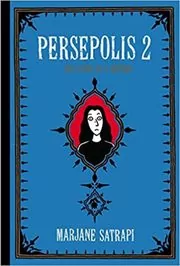The Autobiography of Benjamin Franklin Summary
Author: Benjamin Franklin
This page offers our The Autobiography of Benjamin Franklin summary (Benjamin Franklin's book). It opens with an overview of the book, and follows with a concise chapter-by-chapter summary.
Drafted with AI assistance and reviewed by a human editor.
As an Amazon Associate, we earn from qualifying purchases (at no extra cost to you).
This book has 6 recommenders!
Overview
In 1706, a young boy born in Boston, destined to make history, was one of 17 siblings and was expected to become a minister by his father, Josiah. Yet, his passion for reading and writing led him down a different path. He left his apprenticeship with his brother, James, due to a dispute, and relocated to Philadelphia. There, he found employment with Samuel Keimer, made connections with influential political figures, and subsequently traveled to England. He spent a year and a half working for a printer beside his friend, James Ralph, from whom he would later distance himself.
Upon returning to America in 1726, he established a debating group known as the Junto. Just two years later, he gained control of The Pennsylvania Gazette from Keimer, transforming it into a thriving paper with resources gathered from London. He married his childhood love, Deborah Read, in 1730 and they had two kids. The eldest, William, was born around a year later and plays a significant role in the first part of his narrative.
During the 1730s, he took on several minor roles performing printing services for the government. This period witnessed the inception of Poor Richard's Almanac and his appointment as Philadelphia's postmaster. Additionally, he invented the Franklin stove and contributed to numerous public works projects including the founding of the University of Pennsylvania. He retired from printing in 1748, shifting his focus to scientific experiments involving lightning. By 1753, he had received honorary degrees from prestigious universities and was appointed Postmaster General of America. When war erupted between England and France, he was instrumental in organizing the war effort and proposing how to raise funds for colonial defense. His narrative abruptly ends in 1757, leaving it incomplete. He made attempts to finish it at three different points in his life - 1771, 1783-83, and 1788 - but his death prevented him from doing so.
Edited by
Software engineer whose passion for tracking book recommendations from podcasts inspired the creation of MRB.
Lead investor at 3one4 Capital whose startup expertise and love for books helped shaped MRB and its growth.







Comments
Did we miss something? Have feedback?
Help us improve this page by sharing your thoughts